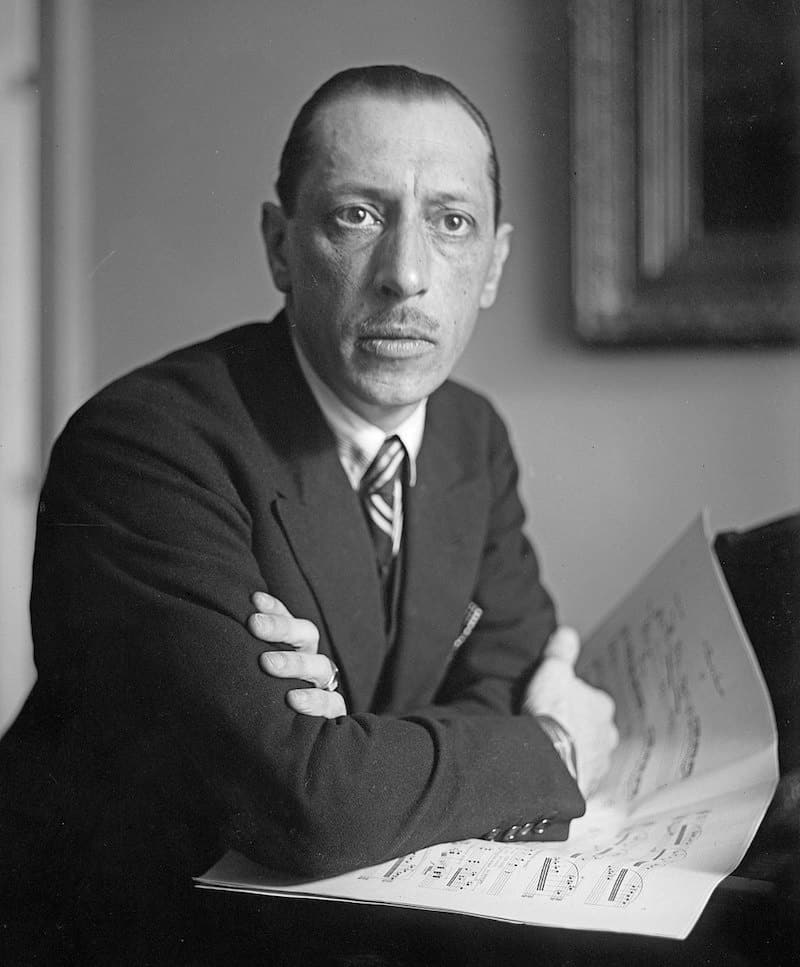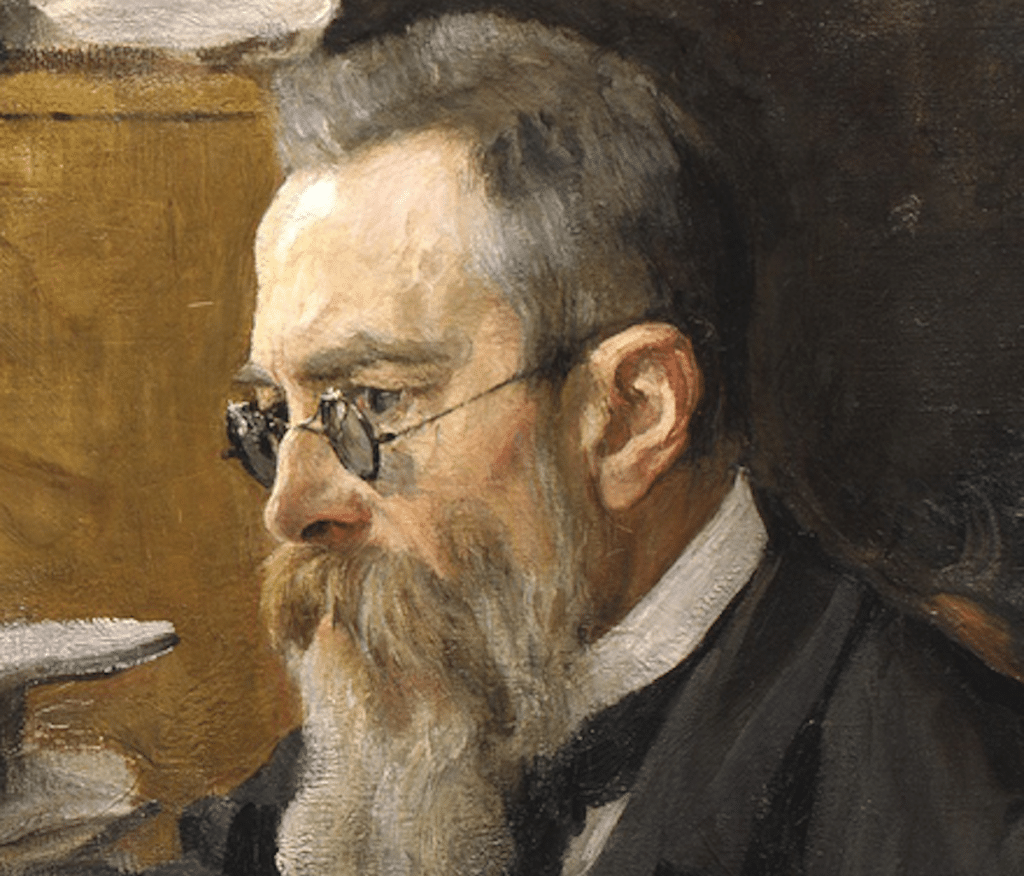One of the most influential composers of the 19th and 20th centuries is Igor Stravinsky. This Russian-born composer, pianist, and conductor left musical footprints in modernist music.
Stravinsky became known for his bold and avant-garde compositions. He sparked unprecedented controversies and brought about seismic shifts in the way we perceive music. Yet there is more to Stravinsky than his revolutionary contributions to music. The man behind the compositions harbored a fascinating life, riddled with anecdotes and facts that are as captivating as his works.
In this post, we’ll delve into ten interesting facts about Igor Stravinsky. At the same time, we’ll unearth tales of resilience, innovation, and relentless pursuit of artistic truth. Let’s get started!

1. His Father Was A Bass Opera Singer
Stravinsky’s father was Fyodor Stravinsky, the renowned bass opera singer. From a young age, Stravinsky was exposed to the world of music through his father. He often attended his father’s performances, and these experiences ignited a passion for music that would define his life.
Fyodor’s influence on his son extended beyond the realm of music. His dedication to his craft, discipline, and commitment to excellence were values he passed on to Igor, who was known to work long hours on his composition.
Without Fyodor’s influence, it is plausible that Igor might not have developed the same passion for music or pursued a career in composition. This could have significantly altered the trajectory of musical history.
2. His Mentor Was Nikolai Rimsky-Korsakov

Nikolai Rimsky-Korsakov was one of the most celebrated Russian composers of the time. He became Stravinsky’s mentor when the young musician was 20 years old. Their relationship was instrumental in shaping Stravinsky’s career and development as a composer.
Stravinsky began taking private lessons from Rimsky-Korsakov. This tutoring arrangement lasted nearly three years. Rimsky-Korsakov guided him through the complexities of orchestration, harmony, and composition. This provided Stravinsky with a solid foundation in the fundamentals of music creation.
Their relationship, however, went beyond that of teacher and student. They shared a deep mutual respect and friendship. When Rimsky-Korsakov passed away in 1908, Stravinsky was deeply affected by the loss of his mentor and friend.cvfa
Related: Check out our post about the greatest Russian composers here.
3. He Lived Through Two Monumental Periods In History
Believe it or not, Igor Stravinsky lived through both World War I and II. This significantly impacted his creative output, shaping the trajectory of his illustrious career.
During World War I, Stravinsky found himself stranded in Switzerland. This period saw him experimenting with Russian folklore in his compositions, as seen in works like Renard and Les Noces.
World War II had a different kind of impact on Stravinsky. In 1939, as Europe braced for another major conflict, Stravinsky moved to the United States. During this relocation, he continued to evolve his style. He incorporated elements of serialism and the twelve-tone technique, which marked a significant departure from his earlier works.
4. He Worked In Solitude
Stravinsky was known for his unique working habits, particularly his preference for solitude. This penchant for solitary work was not merely a preference but rather a necessity for his creative process.
Stravinsky believed that his best work came when he was completely alone. He preferred to be undisturbed by the noise and interruptions of the outside world.
His desire for solitude extended to the physical space where he worked. He often chose to compose in quiet, secluded spots. His workspaces were typically away from the hustle and bustle of city life. This provided him with the tranquility he needed to concentrate on his compositions.
However, Stravinsky’s preference for solitude did not mean he was antisocial or reclusive. On the contrary, he was known to have a vibrant social life and enjoyed engaging with other artists and intellectuals.
5. His Work Created A Riot
The premiere of Igor Stravinsky’s ballet The Rite of Spring at the Théâtre des Champs-Élysées in 1913 caused quite a riot. Its innovative music and Vaslav Nijinsky’s radical choreography shocked audiences.
The ballet began with an unusual high-bassoon melody, followed by complex rhythms and harsh dissonances. Nijinsky’s choreography, performed by Sergei Diaghilev’s Ballets Russes, was equally unconventional.
The audience’s response was so intense it led to loud arguments and physical fights that drowned out the orchestra. Despite this scandalous debut, The Rite of Spring is now considered a pivotal work of modernism. It marked a departure from 19th-century romantic music. It also paved the way for 20th-century musical innovations.
6. He Has Lived In Many Places
Igor Stravinsky was born in Russia in 1882. He began his musical journey in Saint Petersburg before moving to Paris in 1910. Here, he wrote his three ballets — The Firebird, Petrushka, and The Rite of Spring.
During World War I, Stravinsky relocated to Switzerland and returned to France post-war. With the onset of World War II, he moved to the United States in 1939.
He lived in Los Angeles for nearly three decades, where he continued his musical career. His residences in Los Angeles became cultural landmarks due to their association with him.
Stravinsky also owned a house in a remote Ukrainian village called Ustyluh with his first wife, Ekaterina Nossenko. This property was part of a larger estate that had been in Nossenko’s family for generations.
7. Stravinsky Was Also An Author
Aside from being an influential composer of the 20th century, Igor Stravinsky was also an accomplished writer.
His first major written work was Poetics of Music, in 1942. It was originally delivered as a series of lectures at Harvard University. In this book, he discusses the importance of form, the nature of beauty in music, and the role of the composer in society.
He also collaborated with Robert Craft, a conductor and writer. They worked on a series of books that include Conversations with Igor Stravinsky, Memories and Commentaries, and Expositions and Developments. These contain interviews and dialogues between Stravinsky and Craft and provide a unique glimpse into Stravinsky’s creative process.
In addition, Stravinsky penned an autobiography titled Chroniques de ma vie. It offers a personal look into his early life, his family, and his experiences as a young composer in Russia and Europe.
8. Stravinsky’s Last Major Work Was Requiem Canticles
Igor Stravinsky’s Requiem Canticles stands out as a testament to his innovative spirit and profound musical intellect in his later years. Composed in 1966, Stravinsky was in his 80s when he wrote it.
This piece is a condensed requiem mass lasting approximately 15 minutes. It is unique in its non-linear approach to the traditional sequence of a requiem mass. This brevity is striking, especially when compared to the traditional requiem setting.
Stravinsky’s death followed not long after the completion of this masterpiece. He passed away in April 1971 from heart failure in New York City, at the age of 88. Requiem Canticles was performed at his funeral, underscoring the personal and profound connection between the composer and this particular piece of music.
9. He Has A Hollywood Star
Interestingly, Igor Stravinsky is one of the few classical musicians to have been honored with a star on the Hollywood Walk of Fame. His star, located at 6340 Hollywood Blvd., is a testament to his significant influence on 20th-century music and his contributions to radio.
Despite being born and trained in Russia, Stravinsky spent a significant part of his life in the United States. He lived in Los Angeles from 1940 until his death in 1971.
During his time in LA, he worked on various projects. These include composing music for films, though none of these projects came to fruition. His presence in Hollywood during this period likely contributed to his recognition on the Walk of Fame.
10. Stravinsky Has Received Many Awards
With an impressive repertoire, it’s no wonder Igor Stravinsky received many awards. His Grammy Awards are among his most significant accolades. In 1983, he was nominated for the Best Classical Album Grammy. He also received three Grammy Awards in 1962, including Best Classical Composition.
In 1987, he was posthumously awarded the Grammy Lifetime Achievement Award. In 1999, he was honored with the Grammy Hall of Fame Award. This is a special merit award given to recordings that have made a significant qualitative or historical impact.
Beyond the Grammys, Stravinsky also received several other prestigious awards. These include the Léonie Sonning Music Prize, Denmark’s highest musical honor, the Wihuri Sibelius Prize, and the Royal Philharmonic Society Gold Medal, to name a few.
Summing Up Our List Of Igor Stravinsky Facts
As you have read, Igor Stravinsky stands as a monumental figure in classical music. His work has revolutionized musical thought and sensibility, leading to a new wave of modernism in music. From his The Rite of Spring to his published books, the talent of this Russian composer is worthy of study.
As we conclude this exploration of Igor Stravinsky’s life and achievements, it’s clear that his legacy continues to inspire and influence the world of music. His journey is undoubtedly extraordinary. We hope you’ve enjoyed learning about his unique contributions to the world of music.
